MWC 2017: smartphones
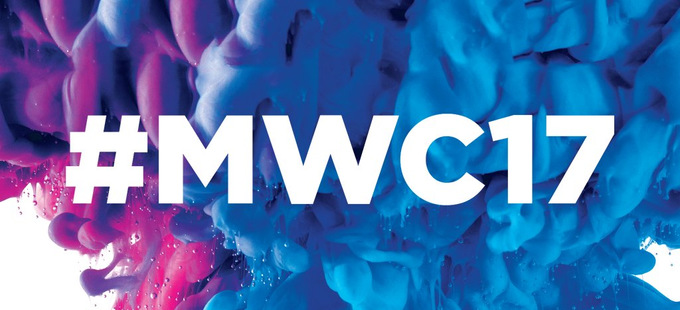
Fast forward to the Mobile World Congress ( MWC ) 2017 exhibition, which takes place annually in Barcelona. In fact, the MWC is CES for smartphones, and this year many well-known global electronics manufacturers like LG Electronics, Samsung, Huawei, Sony and others are announcing a lot of new gadgets. A few days before the official opening of the exhibition, they gave presentations, and judging by the results, in 2017 we will face the influx of Android-smartphones with large displays and thin framing.
Blackberry
Two days before the official launch of the exhibition, TCL Communication Technology introduced a BlackBerry smartphone with a QWERTY keyboard. For a long time, the company's development was codenamed Mercury, but at CES 2017, manufacturers showed a prototype and declassified the name of the new model, the BlackBerry KEYone.
')
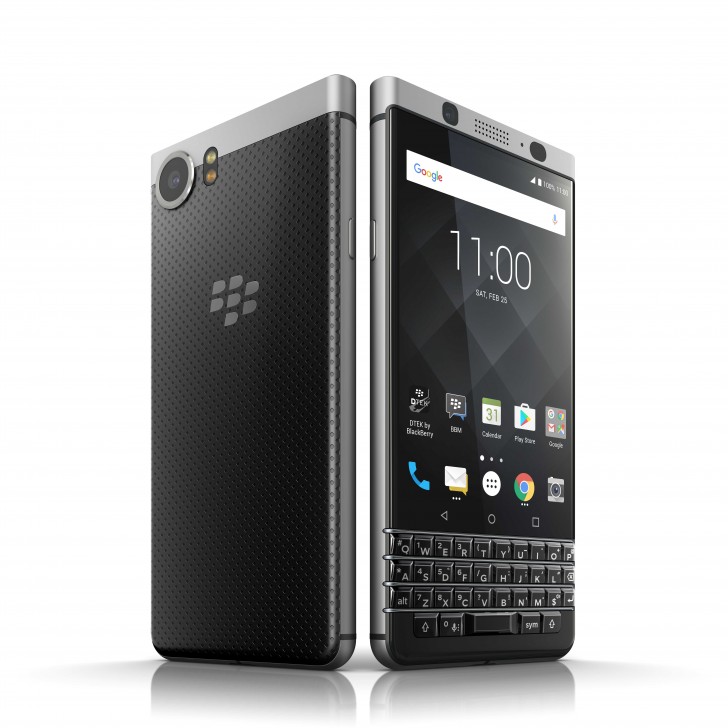
KEYone - the latest smartphone that the company will release under the brand BlackBerry. The novelty is a traditional candy bar with a hardware QWERTY-keyboard. The frame of the case is made of aluminum, and the back panel is made of plastic. The device is running the operating system Android 7.1 Nougat, equipped with a 4.5 inch IPS-display (1620x1080 pixels) and two cameras - the main one with a resolution of 12 megapixels and a front one with 8 megapixels.
The company expects that BlackBerry fans will appreciate the updated keyboard, which responds not only to the duration of pressing, but also allows you to do without it - special sensors are built into the device, thanks to which you can simply slide your fingers across the keyboard. Like many other manufacturers' flagship smartphones, the BlackBerry KEYone has a built-in fingerprint reader designed to protect the device from unauthorized interference. But, unlike all the same smartphones, the sensor is located not on the front or front panel of the device, but in the space bar.
Inside is an eight-core Qualcomm Snapdragon 625 processor and a 3505 mAh battery. KEYone supports the function of fast charging, which, according to the manufacturers, will take just 36 minutes. The amount of RAM the device is 3GB, internal memory - 32GB. It can be expanded to 2TB with a memory card.
LG
The next day, several manufacturers presented their new devices at once. The first was launched LG Electronics with another flagship smartphone G6. The main feature of the new device is a 2K screen with rounded edges, a diagonal of 5.7 inches and an aspect ratio of 18: 9. The display resolution is 1440x2880 pixels with a resultant density of 564 dpi. Implemented support for Dolby Vision technology and HDR10 and a separate quad-DAC chip for better sound.
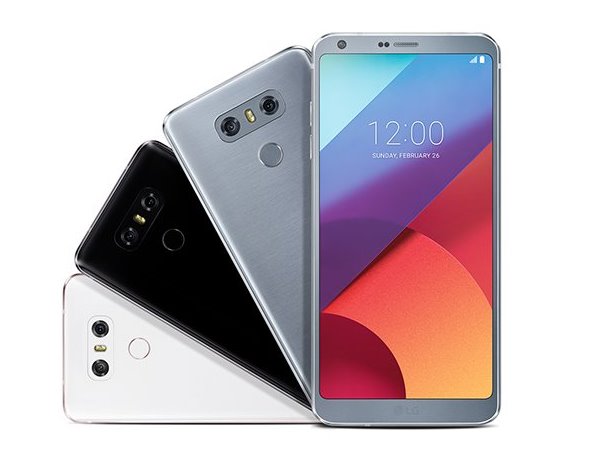
The company demonstrated an updated UX 6.0 interface on top of Android 7.1. Its key features are square blocks, with which you can run multiple applications at the same time and take advantage of new features within a single application.
In partnership with Qualcomm, a 13MP dual camera was developed, the viewing angle of one of the lenses of which is 125 degrees. The front camera with 8 megapixel supports shooting with a viewing angle of 100 degrees and allows you to take pictures in self-portrait mode - the smartphone automatically recognizes the face in the frame.
The smartphone is based on the Snapdragon 821 processor, which Qualcomm released last year. 4GB of RAM are used, there are two versions for 32GB and 64GB of internal flash memory, which can be increased up to 2Tb with microSD. Battery capacity - 3000 mAh with the possibility of wireless charging.
LG G6 was created in partnership with Google, and it bore fruit - this is the second Android device after the Google Pixel, which supports the voice assistant Google Assistant.
On the back of the smartphone is a fingerprint sensor. The metal case is made in three colors: silver, white and black.
Huawei
The Chinese manufacturer has brought Huawei P10 and P10 Plus smartphones to the MWC. The filling of the smartphone does not differ much from previous models, and therefore the company made a bid for an unusual design. The color gamut of the new Huawei line was selected jointly with the Pantone company. As a result of this collaboration, the device appeared in a new, unusual for smartphones color - light green (Greeny).
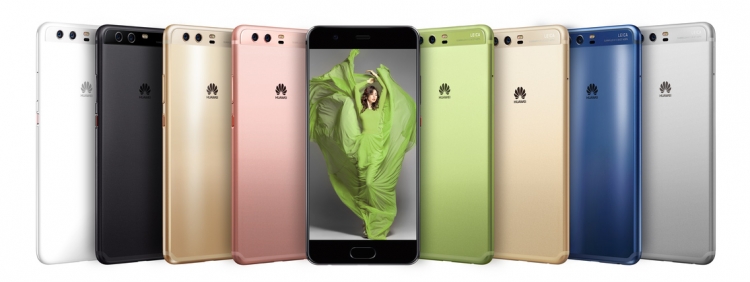
According to the manufacturer, the device case is protected with a special coating that prevents the appearance of fingerprints and scratches. The smartphone turned out thin - only 6.98 mm. In addition, the company decided to move the fingerprint scanner to the front panel, under the screen.
Inside the Huawei P10 is an eight-core HiSilicon Kirin 960 crystal, familiar from the Huawei Mate 3 model. Only one modification with 4GB of RAM and 64GB of internal memory will be available to users. The same chip is installed in the P10 Plus, but another modification with 6GB of RAM and 128GB of flash memory is proposed. All models support a relatively new 4.5G LTE standard with data download speeds up to 600Mbps. The operating system Android 7.1 with a proprietary shell interface Emotion UI 5.1.
In size, both smartphones are not very different from each other - the P10 received a 5.1-inch screen with a resolution of 1920x1080 pixels, and the P10 Plus - a 5.5-inch screen displaying 2560x1440 pixels. The P10 Plus is the first product in the Huawei line that received Quad HD support. Batteries devices received appropriate - 3200 mAh capacity for small and 3750 mAh for a larger model. The company promises up to two days of battery life and fast charging Huawei Super Charge.
Huawei has once again attracted Leica to building the camera. The camera has the usual dual design: one sensor with 12 megapixel takes ordinary pictures, receiving information about the color from them, the second one at 20 megapixel - only monochrome, reading the light data. This technology improves the quality of photos taken in the dark and provides a wider dynamic range. The front camera received a matrix with a resolution of 8Mp.
Devices will go on sale, incl. in Russia, in March 2017 at a price of 650 euros.
Lenovo
The next debutants were the Moto G5 and G5 Plus from Lenovo - smartphones with a metal body and a fingerprint sensor with gesture support, controlled by Android 7.0. Inside, the younger model has a Snapdragon 430 chip, an integrated LTE Cat 4 modem and a 2800 mAh battery. The older model received an eight-core Snapdragon 625, a X9 LTE cellular modem and a 3000 mAh battery.

The difference in screen size is again insignificant: the G5 display is only 5 inches, and the G5 Plus is 5.2. The resolution of both 1920x1080 pixels. Lenovo offers two modifications for each model: so the G5 has a version with 16GB of internal memory and 2GB of RAM, as well as a 32GB flash and 3GB of RAM. G5 Plus can be purchased with 2 or 4GB of RAM and 32 / 64GB of internal memory. Both devices received front cameras with a resolution of 5Mp. The resolution of the main camera in the G5 is 13 megapixels, while the G5 Plus - 12 megapixels. There is a Micro USB port and a 3.5mm headphone input. The lower price limit starts from 200 euros.
Nokia
Here, Nokia showed the world a revived Nokia 3310 model. The new version of the phone has become noticeably smaller and thinner. Together with some reduction in the total volume of the device, some angularity of the hull lines also disappeared. And although the manufacturers have left the former name, the device will operate on the basis of the Nokia's Series 30+ operating system and will receive a QVGA display, a 2Mp camera and a slot for microSD. Despite all these improvements, the device lacks GPS, Bluetooth and NFC functions. Opera Mini is used as the main browser in Nokia 3310. It is expected that the device will work for 31 days in standby mode and 22 hours in talk mode. Issue price - 49 euros.

Another model, presented by HMD under the Nokia brand on the MWC 2017, is the Nokia 6. Smartphone with a 5.5-inch display, 16MP camera, Snapdragon 430 processor, 4GB of RAM and 64GB of flash memory. It can be purchased in the second quarter of 2017 at a price of 299 euros.
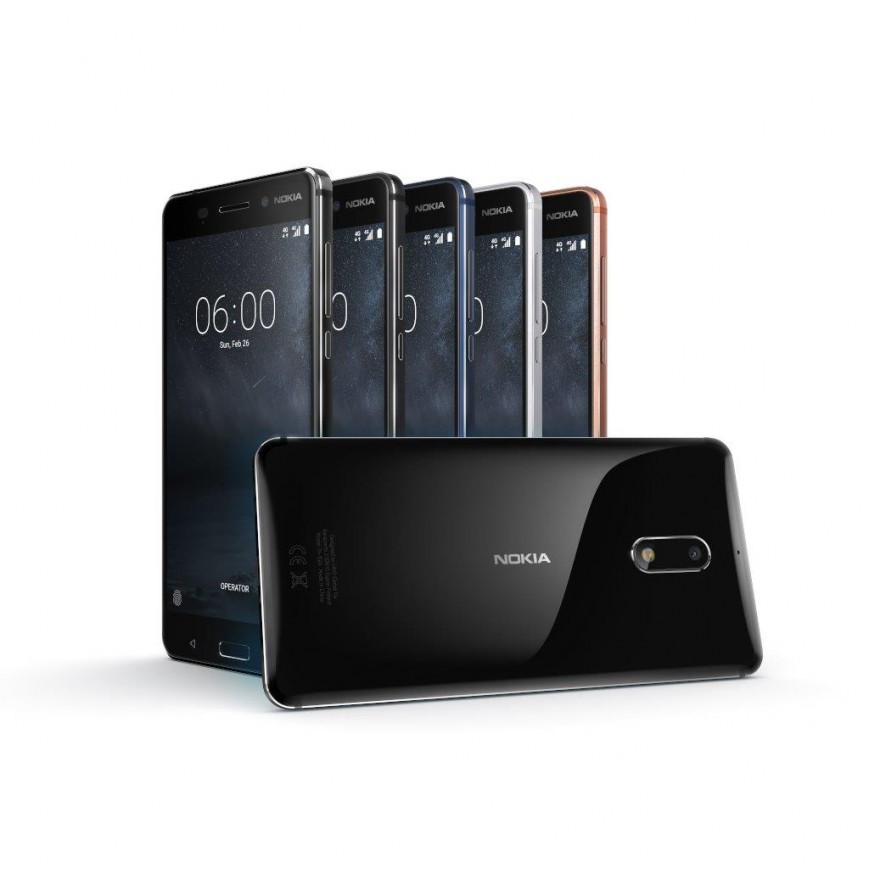
The company did not stop there and presented two low-cost smartphones Nokia 5 and Nokia 3, which will cost 189 euros and 139 euros, respectively. Nokia 5 is a monoblock of aluminum, a 5.2-inch Full HD display which is protected by Gorilla Glass. The device is powered by a Snapdragon 430 chip, received 2GB of RAM and a 13Mp camera.
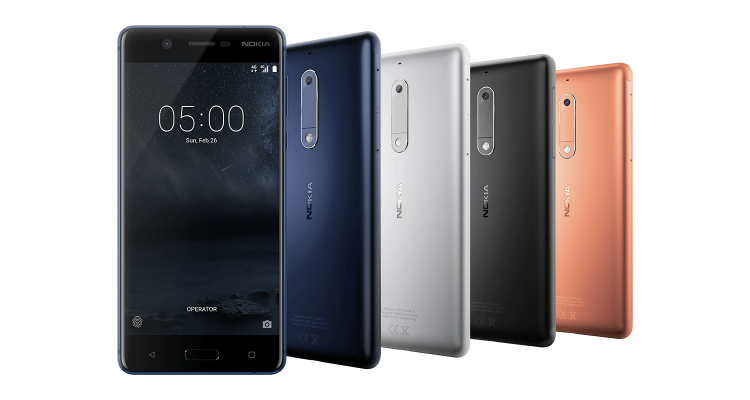
Nokia 3 with a display of 5 inches, a quad-core MTK 6737 processor with a clock frequency of 1.3 GHz, 2 GB of RAM and a camera with a resolution of 8 megapixels.
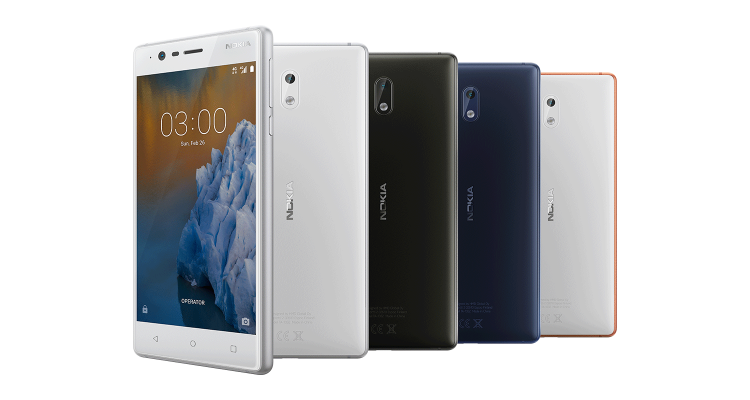
Samsung
Samsung will officially unveil a new smartphone on March 29, however, several videos and photos of the device have appeared on the network, which can provide a more specific picture of the Galaxy S8 and S8 Plus. It looks very similar to S7, but there is one difference - the lack of physical buttons. According to rumors, both versions of the smartphone will have a curved screen, Snapdragon 835 and Samsung Exynos 9 Series 8895 processors, a 12 megapixel main camera and a 8 megapixel front-facing camera and an iris scanner function.
Sony
The Sony Xperia XZ Premium with a 5.5-inch display and a resolution of 2160x3840 supports playback of 4K content, like the previous version of the Xperia Z5 Premium. Partner of the manufacturer - Amazon, this time specifically for the new model launched the production of various HDR content.

The new version is powered by an eight-core Snapdragon 835 processor with a 3230mAh battery and Qualcomm Quick Charge support. With the new module 19Mp-camera Motion Eye smartphone owners will be able to high-speed shooting in 720p resolution. The moisture and dustproof housing will be available in two colors: silver and black.
The amount of internal memory will be 64GB, operational - 4GB. The smartphone is equipped with a USB Type C port.
Sony also announced a miniature version of the Xperia XZs flagship with a 5.2-inch Full HD display, 4GBOZU, USB Type C and a 2900mAh battery.
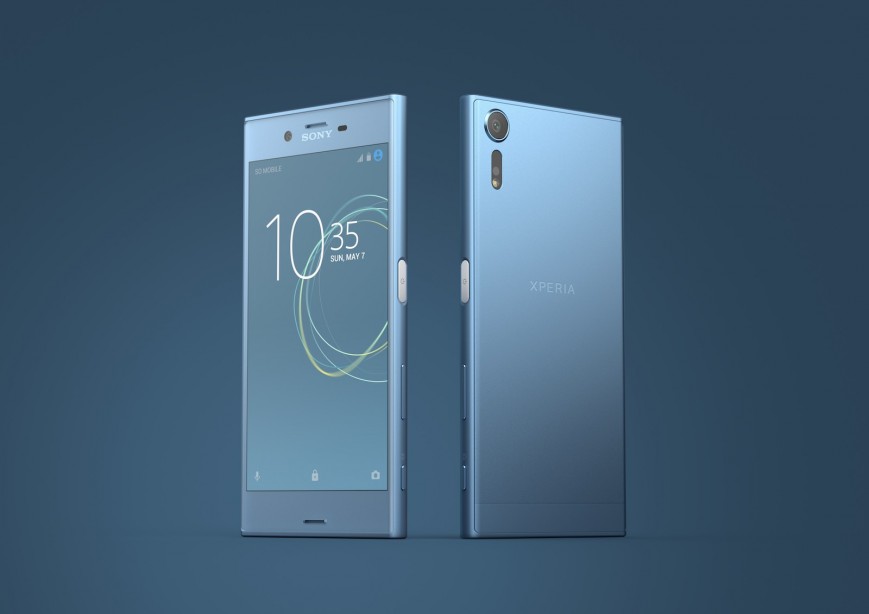
Source: https://habr.com/ru/post/401915/
All Articles